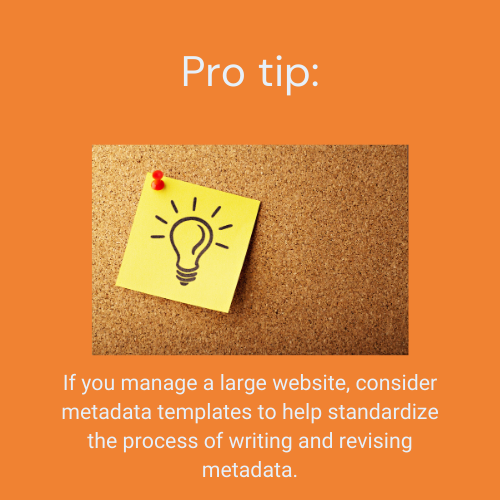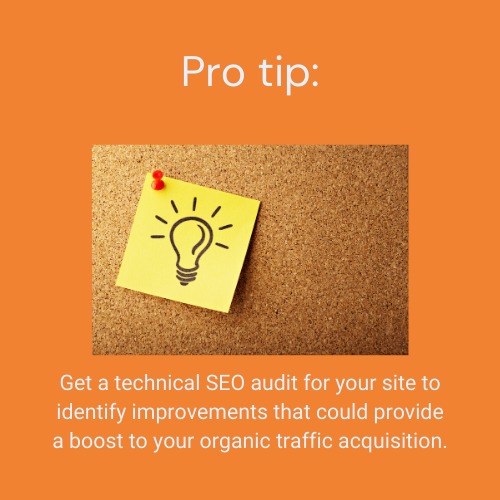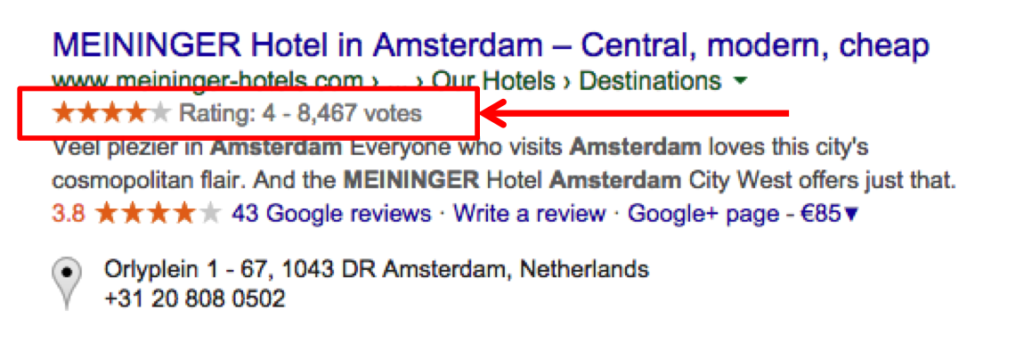Note: this content originally appeared as part of a webinar with Trekksoft.
SEO - on-page vs. off-page
On-page SEO refers to actions taken on your own site to positively impact rankings within search engine result pages (SERPs). These include:
- Writing copy and content that adds value to customers and answers their questions. Understanding search intent is key!
- Following best practices around metadata usage - such as meta titles (title tags) and meta descriptions
- Creating technically sound landing pages that are optimized for top keywords and internally linked to related content
- Ensuring your products, itineraries, and customer reviews are properly marked up with schema to encourage rich snippet search results
- Implementing canonical tags where necessary to denote master versions of page URLs and content for search engine bots
- Properly redirecting pages as to retain link equity
Off-page SEO refers to actions taken outside of your own site to positively impact your rankings within (SERPs). These include:
- Improving your Domain Authority through link building, keeping these three types of links in mind:
- Natural links
- Manually obtained links (digital PR)
- Self-created links
- Influencer marketing + guest blogging
SEO - On-page tips for tour operators
Mind your metadata. SEO metadata comprises of:
- Meta titles (title tags) - should be unique for every page on your site
- Should be 60 characters max and keyword optimized (character count is a guide - Google measures length by pixel width).
- Meta descriptions are essentially ads for a given page on your site. The primary goal is to quickly grab a user’s attention and entice them to click through
- Keep these under 160 characters and don’t force keywords if they don’t come naturally. Description copy will not affect your SERP positioning
- Page headings (H1 tag) - the main titles for a page, summarizing the content to be found on it

A canonical tag is a short code snippet that helps search engines determine the ‘master’ version of pages.
For example, you might have two URLs for a tour. Page A is found via a ‘destination landing page’ and page B is found via a ‘tour type’ page, or similar. Applying a canonical tag to page A tells search engines that it is the master version and to essentially ignore page B when it comes to indexation of the content.
Another key on-page, or ‘technical’ SEO tip, is to ensure that your page redirects are in order. Most often this means implementing something called a ‘301 redirect’ which is a permanent redirect and the most beneficial type of redirect for SEO purposes.
By applying a 301 redirect, all you are doing is telling search engines that a specific page is no longer of value to a user. Instead, you want to point, or redirect, the user to a new URL which would inherit any historical link equity from the old URL.
Note that if you apply another type of redirect, such as a 302 or a 307, you are signaling to Google that the redirect is only temporary, which carries less weight when it comes to SEO value.

Other on-page SEO tips
- Write content for humans, not for search engines, but keep them in mind.
- Do NOT keyword stuff
- DO feel free to use synonyms or variations of your keyword throughout the page. For example, Google is smart enough to understand that ‘small group walking tour of Barcelona’ is synonymous with ‘group walking tour in Barcelona.’
- Watch for duplicate content and ensure each page is created with unique value to the end customer (see ‘canonical tags’)
- Mark up your site with Schema as appropriate for content like product, customer reviews, and events. Schema is code that helps Google to parse HTML resulting in rich snippets in search results

SEO - Off-page tips for tour operators
Outreach & Link Building
Backlinks are still an important ranking signal for search engines - especially relevant, high quality ones from sites with a high Domain Rating (DR). There are generally three types of backlinks that are good for SEO:
- Natural links: obtained from acting as an authority on a certain topic where other sites naturally link back. For example, you write a fantastic blog post on the best gelato spots in Rome and those businesses link to your site from theirs
- Manual links: obtained via focused digital PR or outreach strategy. For example, you create a beautiful infographic detailing the species of whales you might see while on your whale watching tour. This gets picked up by a high profile media website, that links back to your site
- Self-created links: local directory listings, or links from organizations your company might be a member of. For example, you’re a member of your city’s local visitor’s bureau, where your business is featured with a link to your site
Influencer marketing and guest blogging are both additional ways to obtain high quality backlinks. While influencer marketing involves time, campaign planning, and a dedicated budget, guest blogging is really just a time investment. The best way to start is to make a list of topics you’re particularly interested in or passionate about. Cross reference that list with websites that might find incremental value in content around that specific topic.
Then, do some sleuthing to find contact information for your target websites and write a great email introducing yourself, your business, and your post idea. Keep in mind that you are effectively selling the website owner on your idea, by adding value to his or her audience.

A note on Domain Rating, aka, Domain Authority:
A site’s Domain Rating is a number on a scale of 1-100. The higher the number, the more authoritative the site in the eyes of Google and other major search engines. There is a strong correlation between highly authoritative sites and better positioning on SERPs.
Sites like the New York Times and Lonely Planet have DRs in the 90s. A newly launched site with no history likely has a DR of 10.
As a tour or activity operator, aim for a DR in the 50s or 60s - that would mean you’re doing well. Once your site gets into the 70s, it’s in the upper echelon of non-media travel sites. The single biggest driver of DR is the number and quality of backlinks into your site. Ahrefs offers a free tool to check your site’s DR.
SEO & Content Marketing Checklist
- Get a technical SEO audit to uncover easy wins to improve indexation, position on SERPs
- Review metadata for best practice usage. Create a template for larger sites.
- Consider implementing schema for reviews and products
- Write a blog post to obtain backlinks. Make a list of potential complementary sites for outreach
- Create a simple content calendar of topics for your own blog. Start a blog if you haven’t already.
- Refresh visual assets such as video and images, using stock imagery and user generated content (UGC)
- Create a top keyword list and keep track of positioning via a tool like Wincher
- Understand your analytics and which pieces of content have driven results
Talk to Us!
Curious to learn more about Dune7 and the digital strategy and brand marketing services we offer for small and medium-sized businesses like yours? We’d love to hear from you!
Follow us on social for more free marketing tips and guides: @dune7nyc

Thanks for this article. I have a question. Do forum links still work or not?
depends on what you mean by ‘work.’ Forum links, like the ones found in Reddit and Quora, can be good for driving traffic but are usually rel=nofollow which means little to no SEO value. It’s debatable whether nofollow links have SEO value, but don’t depend on them for your link building strategy.
Thank you for sharing effective tips with us.